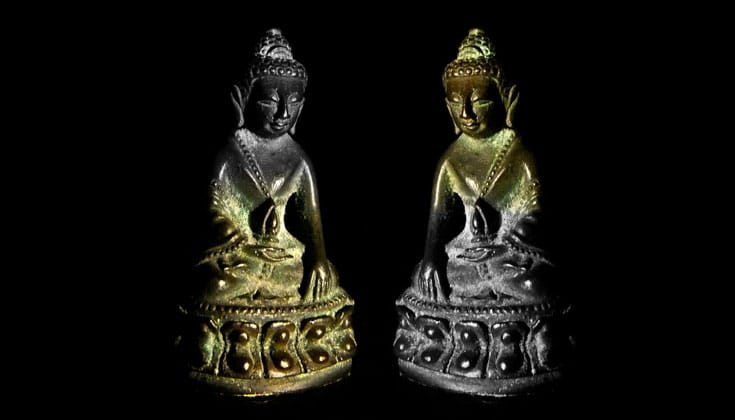“You’re not helping me. Nothing you tell me does any good. You are the worst therapist I’ve ever seen! No matter what I tell you, you don’t get it. All you do is criticize me. I’m trying as hard as I can, and you’re never satisfied.”
I am stunned, startled into silence. What could I possibly have done to invite this attack? I don’t recognize anything that I have actually said—or even thought—in the barrage of words directed at me by this very angry woman.
Hesitantly, I offer a suggestion.
“I’d really like to get what you want me to hear. Perhaps you could try again to tell me?”
“Aren’t you listening?” she said.
“Why do I have to keep repeating myself! I thought I was paying you to listen. I’m not getting anything out of this.”
I try again. “What would be helpful to you right now?” “You’re supposed to be the expert! How should I know?”
It would seem that our work together is not being very useful to this woman. Yet she continues to make appointments, and she calls me frequently between appointments. She keeps asking for my help and then telling me that I’m no help at all.
Needless to say, this is very difficult for me. I don’t like being the object of her anger and her complaints, and I feel unfairly judged and put down. I am having trouble remembering why I’m working with her at all. I find myself hoping that she will fire me or move away. I am losing touch with my compassionate heart.
In Buddhism, particularly in the Mahayana teachings, the cultivation of compassion is pivotal. Compassion refers to our desire to alleviate the sufferings of all beings. In order to do this, the first step is to recognize, acknowledge and open to the reality of suffering both in our own lives and in the lives of others.
All of us who act as helpers, either professionally or in the ordinary relationships of our lives, will encounter situations in which it is very challenging to keep our hearts open to another person. This woman, with whom I worked quite a few years ago now, was one of the most difficult clients I ever worked with. No, that is not quite right. It is not that she was difficult in herself. I had a hard time working with her.
I would like to share with you a technique that some of my students and I came up with called the “Difficult Person” exercise. Inspired by some of the teachings on exchanging oneself for other in Shantideva’s Bodhicharyavatara, it can be helpful in reconnecting us with our compassionate longings, our hearts.
In Buddhism, particularly in the Mahayana teachings, the cultivation of compassion is pivotal. Compassion refers to our desire to alleviate the sufferings of all beings. In order to do this, the first step is to recognize, acknowledge and open to the reality of suffering both in our own lives and in the lives of others.
Through our practice of mindfulness/awareness meditation, we come to recognize the reality of our own pain and suffering. We see both the simple fact of the pain in our lives and also how we try to avoid recognizing it. The practice of tonglen is another powerful way to open to the pain in our own lives and that of others.
The Difficult Person exercise provides an additional tool for us to focus on one particular person with whom we are having a hard time. Although it was designed for working with therapy clients, it could be used in any kind of relationship.
How to do the Difficult Person exercise
The Difficult Person exercise makes use of our imagination.
Begin by sitting quietly for a little while. Then, with your eyes closed, imagine that the person you are having a hard time with (the “DP” for “difficult person”) is quietly sitting opposite you at eye level. Imagine all the details you can about how the DP looks. Try to let the image become vivid. Do this for a few minutes.
Now, imagine that you switch places and you become the DP. Notice first what it is like to be in this body. How old are you? How is your health? Do you have any physical discomforts as this person? What emotions do you feel? For what do you long? What kinds of thoughts are in your mind? Spend a few minutes identifying with the DP.
When we can more fully recognize the pain of the other person, we are likely to be less caught up in our own story about being good helpers, and we are more likely to stay present with a compassionate heart.
Now, look at the person sitting opposite you. (You are the DP looking at the you who began the exercise, i.e., yourself.) As you look at this person who is having such a difficult time with you, think about what it is you want from them. Imagine further that the person can actually give you what you want. Now imagine that the person you are looking at gives you whatever it was that you wanted. Notice how you feel having received what you were longing for. Take a little while to go through this whole process.
Now, switch back and become your ordinary self again. Look at the DP again. Notice how you feel as you look at him or her. Notice how you feel having given the DP what he or she wanted. Is it okay with you? Could you really do this?
When you are ready, open your eyes and sit quietly for a few more minutes.
What might come of it?
Many of us who have done this exercise have found that what the DP wanted was something much more simple than what we had thought. Often it is easy for us to imagine giving it to them, and we find that we become quite tender. Sometimes, of course, it doesn’t work out that way, but even so, it might give us some deeper understanding of the DP’s pain. When we can more fully recognize the pain of the other person, we are better able to reconnect with our own hearts and be more present with the other person. We are likely to be less caught up in our own story about being good helpers, and we are more likely to stay present with a compassionate heart.
A number of years after the client I described above had stopped our work together, she called me on the phone. She asked if she could come to see me and buy me a cup of coffee. I met her and she told me she wanted to thank me for how much I had helped her. I was dumbfounded; I would not have guessed that she would have thought so.
Apparently I had managed to set some boundaries that had been useful, and I had taught her some simple mindfulness skills. But, most importantly, she said, I had been willing to put up with her when she was going through a really hard time. In other words, what had been most valuable was not my ability to understand what she said or any suggestions that I had made, but my willingness, discontinuous though it was, to be present with a heart that was open to her and to her pain.

